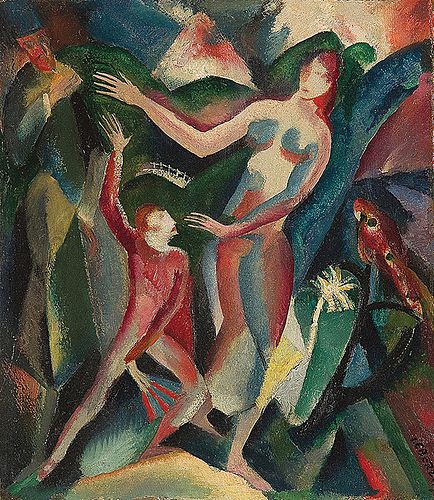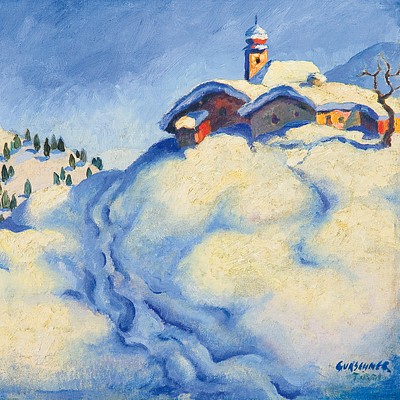JOSEF EBERZ (Limburg an der Lahn 1880 - 1942 Munich)
Lot 99
Estimate:
EUR€10,000 - EUR€20,000
$10,752.69 - $21,505.38
Absentee vs Live bid
Two ways to bid:
- Leave a max absentee bid and the platform will bid on your behalf up to your maximum bid during the live auction.
- Bid live during the auction and your bids will be submitted real-time to the auctioneer.
Bid Increments
| Price | Bid Increment |
|---|---|
| EUR€0 | EUR€10 |
| EUR€100 | EUR€50 |
| EUR€700 | EUR€100 |
| EUR€1,000 | EUR€200 |
| EUR€3,000 | EUR€300 |
| EUR€3,600 | EUR€400 |
| EUR€4,000 | EUR€500 |
| EUR€7,000 | EUR€1,000 |
| EUR€16,000 | EUR€2,000 |
| EUR€30,000 | EUR€3,000 |
| EUR€36,000 | EUR€4,000 |
| EUR€40,000 | EUR€5,000 |
| EUR€150,000 | EUR€10,000 |
About Auction
By Widder Auctions
Nov 23, 2023
Set Reminder
2023-11-23 11:00:00
2023-11-23 11:00:00
America/New_York
Bidsquare
Bidsquare : Masterpieces
https://www.bidsquare.com/auctions/widder-auctions/masterpieces-14076
Masterpieces by Austrian and German artists are coming up for auction in Vienna on November 23rd Widder Auctions office@widderauktionen.com
Masterpieces by Austrian and German artists are coming up for auction in Vienna on November 23rd Widder Auctions office@widderauktionen.com
- Lot Description
JOSEF EBERZ (Limburg an der Lahn 1880 - 1942 Munich)
Exotic Dance, 1917
oil/cardboard, 34,9 x 30,3 cm
signed J. Eberz, dated 17
depicted in Expressiver Realismus in Deutschland 2017, p. 13, N. 18
ESTIMATE °€ 10000 - 20000
STARTING PRICE °€ 10000
Josef Eberz was a German painter, graphic artist, illustrator and designer of mosaics and stained glass windows with a strong focus on religious themes. He studied at the Munich Art Academy with Franz Stuck and Peter Halm, and at the Düsseldorf and Karlsruhe Art Academies. At the Stuttgart Art Academy he studied with Christian Landenberger and with the painter and color theorist Adolf Hölzel, whose master student he became. Eberz was a member of the Hölzelkreis (Gertrud Alber - who married Eberz in 1917, Willi Baumeister, Paul Bollmann, Hans Brühlmann, Heinrich Eberhard, Maria Hiller-Foell, Ida Kerkovius, Otto Meyer-Amden, Alfred Heinrich Pellegrini, Oskar Schlemmer, August Ludwig Schmidt, Hermann Stenner and Alfred Wickenburg). With this group, Hölzel visited the Sonderbund exhibition in Cologne in 1912, where works by Vincent van Gogh, Edvard Munch, Paul Cézanne, Paul Gauguin and Pablo Picasso were shown). In 1913 he received his first major commission, the altarpiece for the Konviktskirche in Ehingen an der Donau. This was followed by an order for a large-scale Stations of the Cross, but this did not go beyond two sample works. With Eberz, a turn to religious subjects remained visible. Eberz began as an expressionist, influenced by Futurism and Cubism; In later monumental works there was a strong influence of the Pittura metafisica (Giorgio de Chirico, Carlo Carrà, Giorgio Morandi). After a visit to the collector Heinrich Kirchhoff in Wiesbaden in 1915, he commissioned him to paint in his garden and in the botanical garden in Darmstadt. In Darmstadt, Eberz came into contact with the Dachstubenkreis around Joseph Würth and made lithographs for the novella “Die Karsreis” by Kasimir Edschmid. Eberz became a member of the New Munich Secession, but also belonged to the Young Rhineland association. He was a founding member of the Darmstadt Secession, as well as the Society for Christian Art in Munich and the November Group in Berlin. During the Räterepublik (soviet republic), he was active in artists' councils and committees. Eberz ran studios for painting and graphics in the Munich training workshops, which emerged from the teaching and experimental studios for applied and fine arts ("Debschitz School") founded by Hermann Obrist and Wilhelm von Debschitz in 1902, which were merged in 1914 with that of Paul Renner and Emil Preetorius founded the Munich School for Illustration and the Book Industry in 1909. Maria Bauerreis, Hanns Lamers and Walter Lindgens describe themselves as students of Eberz. In 1929, when the German Academy Villa Massimo in Rome reopened after a long period of confiscation, Eberz was one of the first scholarship holders. In 1937, in the “Degenerate Art” campaign, a large number of Eberz's works were confiscated from museums and public collections. Josef Eberz was the brother of the religious philosopher and Hochland employee Otfried Eberz (Jakob Maria Remigius Eberz).
PLEASE NOTE:
The purchase price consists of the highest bid plus the buyer's premium, sales tax and, if applicable, the fee of artists resale rights. In the case of normal taxation (marked °), a premium of 24% is added to the highest bid. The mandatory sales tax of 13%, for photographys 20%, is added to the sum of the highest bid and the buyer's premium. The buyer's premium amounts to 28% in case of differential taxation. The sales tax is included in the differential taxation.
- Shipping Info
-
Shipping Terms
We will send you the invoice shortly after the auction. As soon as we have recieved the amount, the art can be picked up at Johannesgasse 9-13, 1010 Vienna. Please note that the buyer is responsible for pick-up and shipping of the lot.
Should you wish to ship your items, please contact:
Mailboxes
Email: oper@mbe-co.at
Tel: 01 5128855
Please note that storage fees may apply, should the pieces not be picked up within 14 days after invoicing for domestic and 28 days for international transportation.
Our team will be happy to assist you with any further information at office@widderauktionen.com or at 0043 676 555 66 10.
-
- Buyer's Premium



 EUR
EUR CAD
CAD AUD
AUD GBP
GBP MXN
MXN HKD
HKD CNY
CNY MYR
MYR SEK
SEK SGD
SGD CHF
CHF THB
THB













